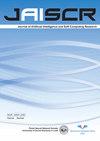Mixup (Sample Pairing) Can Improve the Performance of Deep Segmentation Networks
IF 2.4
3区 计算机科学
Q2 COMPUTER SCIENCE, ARTIFICIAL INTELLIGENCE
Journal of Artificial Intelligence and Soft Computing Research
Pub Date : 2021-10-08
DOI:10.2478/jaiscr-2022-0003
引用次数: 6
Abstract
Abstract Researchers address the generalization problem of deep image processing networks mainly through extensive use of data augmentation techniques such as random flips, rotations, and deformations. A data augmentation technique called mixup, which constructs virtual training samples from convex combinations of inputs, was recently proposed for deep classification networks. The algorithm contributed to increased performance on classification in a variety of datasets, but so far has not been evaluated for image segmentation tasks. In this paper, we tested whether the mixup algorithm can improve the generalization performance of deep segmentation networks for medical image data. We trained a standard U-net architecture to segment the prostate in 100 T2-weighted 3D magnetic resonance images from prostate cancer patients, and compared the results with and without mixup in terms of Dice similarity coefficient and mean surface distance from a reference segmentation made by an experienced radiologist. Our results suggest that mixup offers a statistically significant boost in performance compared to non-mixup training, leading to up to 1.9% increase in Dice and a 10.9% decrease in surface distance. The mixup algorithm may thus offer an important aid for medical image segmentation applications, which are typically limited by severe data scarcity.混合(样本配对)可以提高深度分割网络的性能
摘要研究人员主要通过广泛使用随机翻转、旋转和变形等数据增强技术来解决深度图像处理网络的泛化问题。最近为深度分类网络提出了一种称为mixup的数据增强技术,该技术从输入的凸组合中构建虚拟训练样本。该算法有助于提高各种数据集的分类性能,但迄今为止尚未对图像分割任务进行评估。在本文中,我们测试了混合算法是否可以提高深度分割网络对医学图像数据的泛化性能。我们训练了一个标准的U-net结构来分割来自前列腺癌症患者的100张T2加权3D磁共振图像中的前列腺,并在Dice相似系数和来自经验丰富的放射科医生进行的参考分割的平均表面距离方面比较了有无混淆的结果。我们的研究结果表明,与非混合训练相比,混合训练在统计学上显著提高了成绩,导致骰子增加了1.9%,表面距离减少了10.9%。因此,混合算法可以为医学图像分割应用提供重要的帮助,医学图像分割通常受到严重数据短缺的限制。
本文章由计算机程序翻译,如有差异,请以英文原文为准。
求助全文
约1分钟内获得全文
求助全文
来源期刊

Journal of Artificial Intelligence and Soft Computing Research
COMPUTER SCIENCE, ARTIFICIAL INTELLIGENCE-
CiteScore
7.00
自引率
25.00%
发文量
10
审稿时长
24 weeks
期刊介绍:
Journal of Artificial Intelligence and Soft Computing Research (available also at Sciendo (De Gruyter)) is a dynamically developing international journal focused on the latest scientific results and methods constituting traditional artificial intelligence methods and soft computing techniques. Our goal is to bring together scientists representing both approaches and various research communities.
 求助内容:
求助内容: 应助结果提醒方式:
应助结果提醒方式:


